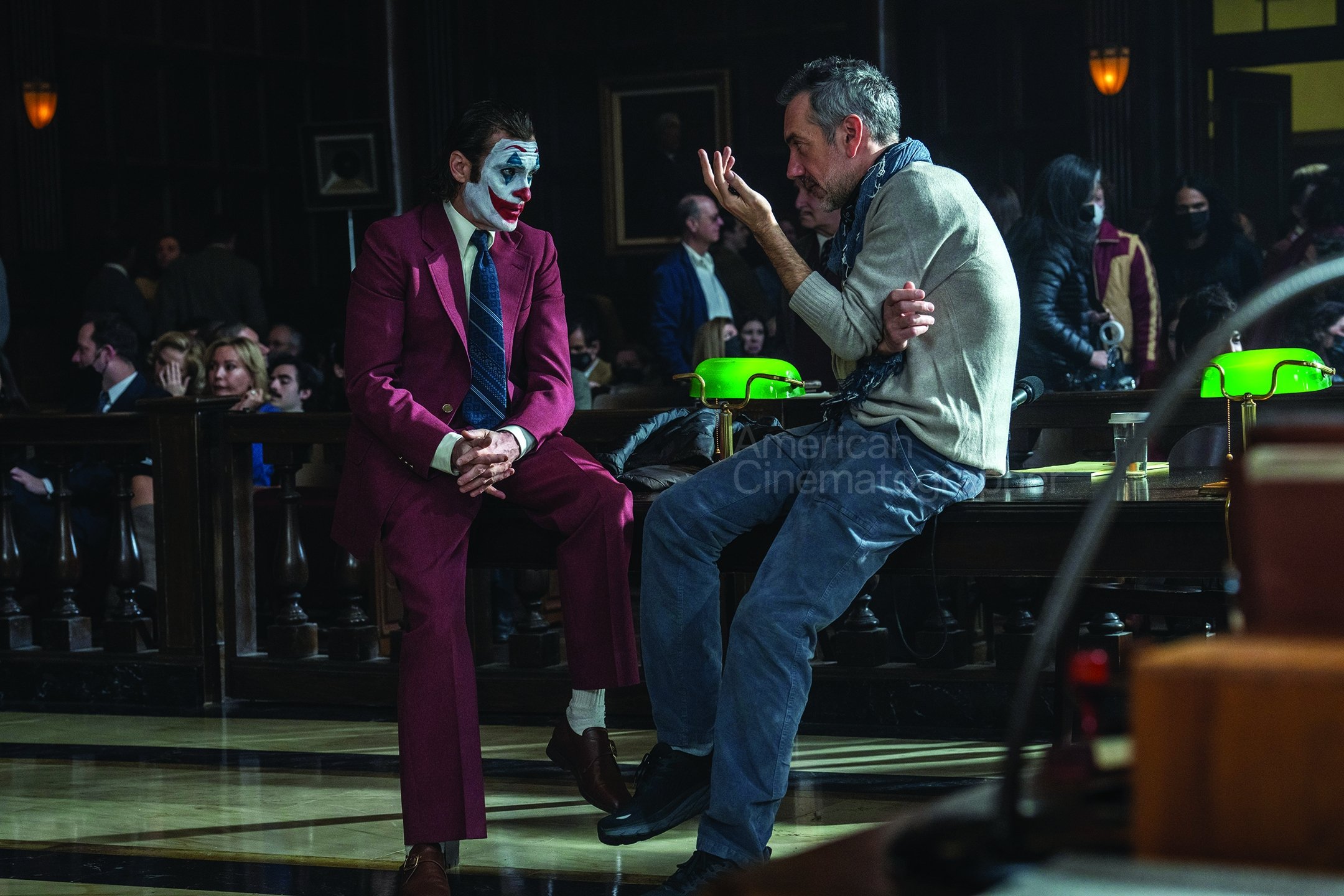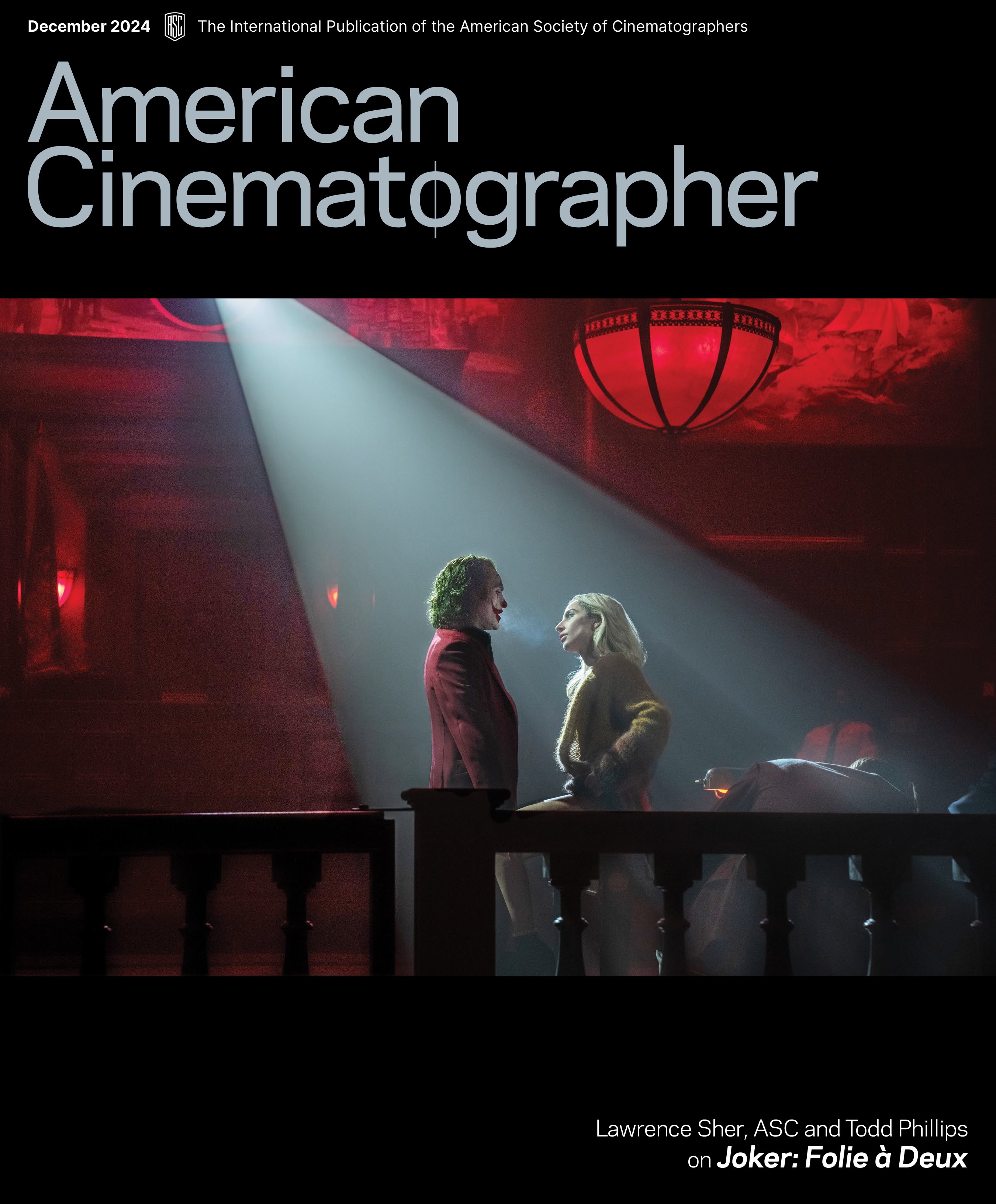
Director Todd Phillips on Process and Collaboration for Joker: Folie à Deux
“Films are a living, breathing organism — constantly shifting shapes and evolving during the making.”
American Cinematographer: What were your overall goals for continuing the visual language of the first film, while adding this new element of a musical with its accompanying fantasy sequences?
Todd Phillips: Well, that was the goal — the idea being that this film, of course, took place in the same ‘world’ as the first film. So, certainly, in the first 15 minutes or so it was a continuation of the visual language that Larry [Sher, ASC] and I had previously established. The fun part was coming up with what Arthur’s fantasy world looks like when he finally finds the thing he’s been craving his whole life — love. Or at least what he thinks is love.
Larry mentioned a philosophy of yours, that a film is written three times: during the writing of the script, during the shoot and during the edit. Given the unusual way that Joker: Folie à Deux was shot, can you discuss how elements of the film were ‘written’ during that second phase, and how Larry contributed to that?
I guess what I mean by that is that films are a living, breathing organism — constantly shifting shapes and evolving during the making. I have found that the more open I am to that philosophy, the more magic is able to find its way into the film. Larry contributes to that in a million ways, the most obvious being how extraordinarily nimble he is and how open to change he is. Even in the last minute, which is so often when it happens.
What are the benefits of shooting scenes top to bottom?
Pretty much every decision I make, on every film I make, is built around the actors. To be more specific, it’s built around giving actors the ‘room’ — or freedom — to discover moments that may not already be in the script. Filming scenes from top to bottom is just one of the ways to do that. Within reason, of course — on a long scene, for example, we’ll often break it into two parts.
Can you share your thoughts on Larry and the crew being brought in with fresh eyes, shooting first takes without knowing the specifics of what will happen?
Well, over the years I have learned that there is not one way to direct actors — what works for one may not work for the others. My experience with Joaquin has been that while we spend a lot of time talking about a scene, he doesn’t love ‘putting it on its feet’ until the cameras are rolling. In the beginning, that can stress a crew out, but I think eventually they understood that the ‘urgency’ or ‘chaos’ that created was helping our actor — and, really, that’s why we are all there. Funny enough, I discovered an unintentional benefit to it, which is that it gives the film something of a handmade feel. In other words, not every frame is perfect — [for example,] sometimes the focus buzzes, at least on the early takes — and oftentimes those takes find their way into the edit, and the whole thing feels a little more lo-fi, which always kinda works.
Tell us about the importance of allotting significant prep time — and can you comment on Larry’s use of that opportunity?
We try to budget for as much prep time as possible, and Larry uses every minute of it. We, of course, go through the script page by page and come up with a plan of attack for each scene. It gives Larry and his team a jumping-off point, at the very least. The way they were able to pre-light the sets was a dream. And if, for example, Joaquin and I pivoted on the day, it was always a pretty quick adjustment between gaffer Rafael Sanchez’s and key grip Ray Garcia’s teams. Honestly, we had the most incredible crew from top to bottom, and I have to credit Larry for putting that whole group together.
What is your perception of the tight-knit collaboration between Larry and the camera, grip and lighting crews on this film?
On all the films I’ve done with Larry, I am always amazed at how hard the crew works for him. I think Larry’s energy is infectious. He has a deep love for what he does and I really believe that inspires the whole crew to give it their all. Not that they wouldn’t do it otherwise, but there is just something really beautiful about the way they all respond to his intensity.
Looking at your other films — like The Hangover series, for example — can you comment on how the Joker films are ‘of a piece’ with your prior work with Larry, specifically regarding shooting style?
I like to think that Larry and I always aim for something cinematic. Whether we’re shooting The Hangover or War Dogs or Joker — whether you like the films or not, we are always aiming to make something that feels like a movie. So often, comedies in particular can look like television. Overlit. Traditional coverage. And I get it: Fast, cheap, funny — that’s kind of all that matters. But we always felt that we can do all that and still make it feel cinematic. That was always the goal.
Why have you chosen Larry as a long-term collaborator?
Larry and I first met in 2008, when I was meeting DPs for the first Hangover film. We immediately clicked on our love for movies and our desire to work fast and loose. Obviously, I haven’t looked back since. He’s always my first call and I have literally moved shooting schedules to wait for him. Not only is he one of my closest friends, but he’s certainly my longest and closest collaborator. To put it simply — Larry has an identical twin brother, Andy, and that’s always bothered me, because I like to think that Larry is my brother!
You'll find our complete coverage with Sher on Joker: Folie à Deux in our December 2024 issue:

Sher also discusses his work in the film in this episode of ASC Clubhouse Conversations with interviewer Patrick Cady, ASC:






